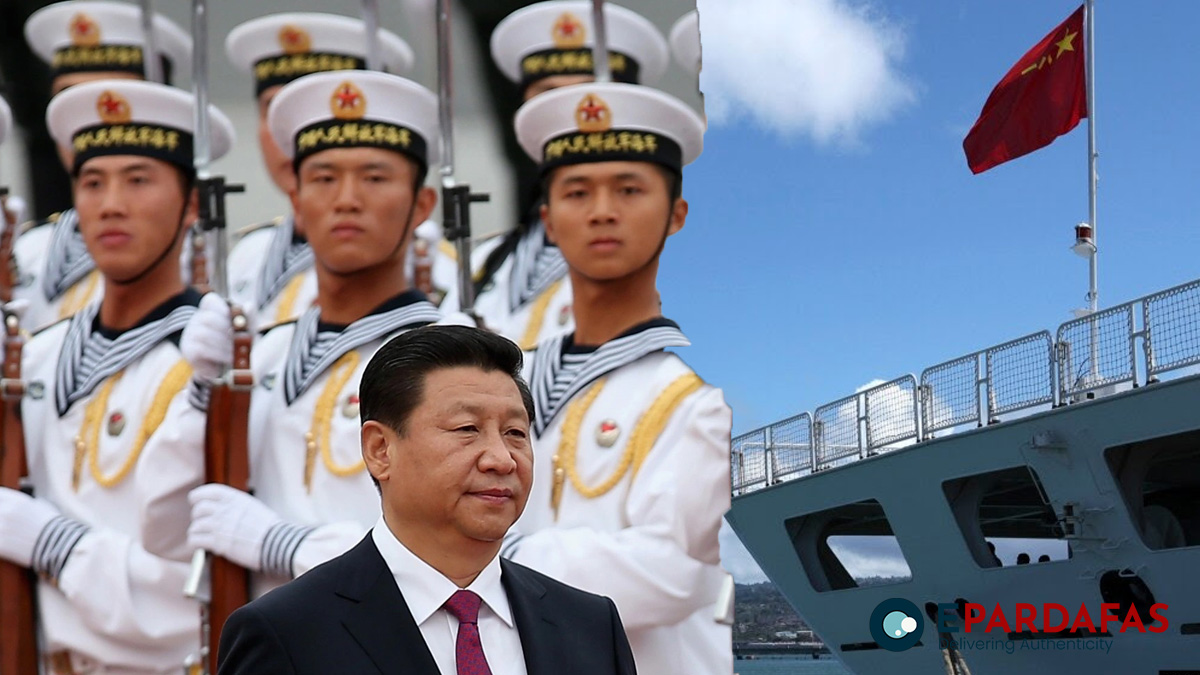
China’s maritime expansion raises global concerns as US navy struggles to keep pace
Beyond warships, the Chinese Communist Party (CCP) has significantly increased its ship-building capacities, acquired numerous port operations worldwide, and invested heavily in oceanographic research. As tensions rise in the Taiwan Straits and South China Sea, the Pentagon acknowledges that the United States no longer possesses the maritime capacity to match China in cargo transport and shipbuilding. This article delves into the implications of China’s maritime ambitions and explores the global response required to counter the threats posed by its growing navy.
China’s ambition to build a 400-ship navy marks an unprecedented development in sea power. This expansion is complemented by China’s thriving ship-building industry, which now boasts the world’s largest fleet of merchant ships, second only to Greece.
Furthermore, the CCP has invested significantly in oceanographic research, including the establishment of deep-water stations on the seafloor. These endeavors collectively demonstrate China’s determination to strengthen its maritime capabilities and assert dominance in crucial strategic regions.
Acknowledging the growing threat posed by China’s naval prowess, Chief of Naval Operations Adm. Michael Gilday admitted that the United States currently lacks the maritime capacity to match China in cargo transport and shipbuilding. The reduction in the number of private shipyards under contract for shipbuilding and repair, both in the military and commercial sectors, has further contributed to this disadvantage. Economic influences, such as the absence of subsidies for private shipyards and a post-9/11 focus on ground wars, have played a significant role in the contraction of the US shipbuilding industry.
The globalization of trade and the sale of US-based container shipping companies have significantly impacted the United States’ maritime supremacy. The country’s dependence on foreign flag carriers for maritime trade, such as CMA CGM, has increased, while the US shipbuilding industry struggles to compete in the construction of large container ships or liquefied natural gas (LNG) carriers due to higher costs. The current price disparity makes it impractical for the US to regain its shipbuilding competitiveness in these sectors.
However, it is essential to recognize the symbiotic relationship between the US economy, global sea carriers, and the US Navy’s security role in ensuring smooth sea trade lanes. To counter China’s naval growth and dominance in commercial trade, a collaborative global response is required. Countries like South Korea and Japan, with their extensive shipyards, port capacities, and naval expertise, play a crucial role in managing the complexity of modern ships, including LNG and methane carriers. These nations can become essential partners in addressing the maritime challenge posed by China.
It is through these international relationships that the scale of Chinese dominance in commercial trade can be effectively checked. Preserving the security of the “Maritime Commons” becomes imperative to ensure the continued global trade that sustains economies worldwide. While the US Navy plays a vital role in securing sea trade lanes, it must work in tandem with international partners to counter China’s maritime expansion effectively. Japan and South Korea are just two examples of nations that possess the infrastructure and expertise to support global sea trade while safeguarding against China’s growing dominance.
China’s swift development of sea power, characterized by the expansion of its navy, ship-building capabilities, and port operations, has created global concerns regarding maritime dominance. The United States, recognizing its current disadvantage in sea power, has started taking some solid steps to address the issue.
Japan and South Korea, with their established shipyards, port capacities, and naval expertise, are prime examples of countries that can play a pivotal role in supporting global sea trade while acting as a deterrent to China’s maritime ambitions.
These nations possess the necessary infrastructure and knowledge to contribute significantly to the collective efforts aimed at preserving the security of the “Maritime Commons.”
Collaboration between the US Navy and international partners is crucial to effectively counter China’s maritime expansion. By working together, these nations can pool their resources, share intelligence, and coordinate efforts to maintain a balance of power and ensure the continued flow of global trade.
Moreover, the United States must continue to invest in its own naval capabilities and shipbuilding industry. Recognizing the importance of a strong maritime presence, efforts should be made to revitalize and expand the country’s shipyards.














Comments